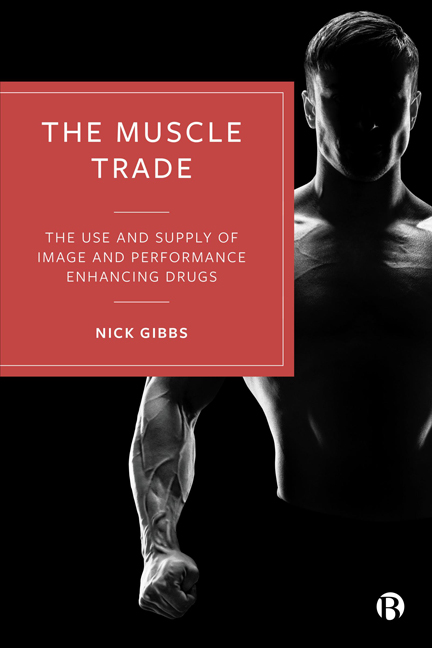Book contents
7 - #Ripped: Social Media, Prosumption, and Bodily Desire
Published online by Cambridge University Press: 28 March 2024
Summary
Will-to-recognition and performing for the Big Other online
Having explored the lifestyle aspects of IPED consumption, this chapter sets out to examine the role of SNS in perpetuating bodily desire and, by extension, my sample’s use of illicit ergogenic aids. Before exploring the SNS under study and my sample’s digitally mediated content production, however, it is crucial to map the men’s relationship with Facebook and Instagram. Each participant was active on SNS during the study and most interviewees (besides one) indicated that they simultaneously owned a Facebook and Instagram account. They typically spent between two to three hours on the sites daily and most tended to post content at least every other day. As such, through my own researcher Facebook and Instagram profiles, new digitally mediated data was only ever a swipe away and users’ content perpetually littered both sites. Given the inherently ocular nature of my participants’ posts, it seems futile to rely upon the written word to capture the nature of their content. Instead, towards the close of data collection I contacted the participants with whom I built the greatest rapport to ask for their most-liked images, which are displayed in Figure 7.1.
The men’s posts almost exclusively consisted of their sculpted physiques, as they posed for mirror selfies and shared images of their competition triumphs, all the while tensing every sinew under the “anabolic lighting” (Ed) of the gym or a natural beauty spot. Consistent with Tiggemann and Zaccardo’s (2018) description of male fitspiration content, the men’s posts showcase an over-identification with the male muscular ideal as well as a concerted attempt to self-objectify their physiques (Hakim, 2015). But why do they use social media in this way?
In answer to this question, it is first prudent to unpack the ubiquity of SNS use on contemporary subjectivity and how selfhood, for my sample, is indelibly bound up in the content they prosume (Toffler, 1980; Fuchs, 2021). Yar (2012: 251) explores this within the notion of ‘will-to-representation’, which describes the ‘imperative to represent the self via electronic mediation’ and have one’s actions observed and validated by others.
- Type
- Chapter
- Information
- The Muscle TradeThe Use and Supply of Image and Performance Enhancing Drugs, pp. 93 - 102Publisher: Bristol University PressPrint publication year: 2023

